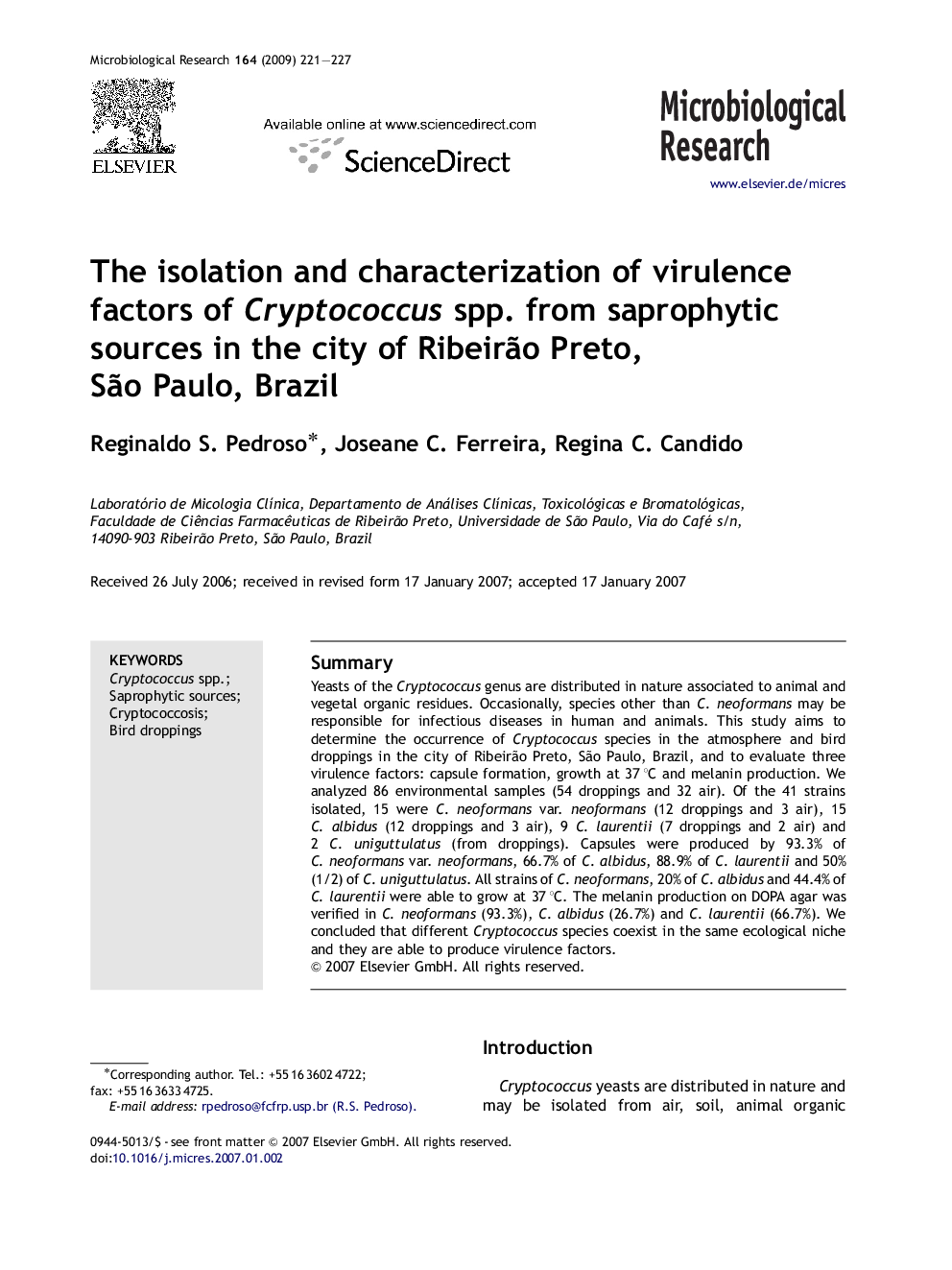| Article ID | Journal | Published Year | Pages | File Type |
|---|---|---|---|---|
| 2092501 | Microbiological Research | 2009 | 7 Pages |
SummaryYeasts of the Cryptococcus genus are distributed in nature associated to animal and vegetal organic residues. Occasionally, species other than C. neoformans may be responsible for infectious diseases in human and animals. This study aims to determine the occurrence of Cryptococcus species in the atmosphere and bird droppings in the city of Ribeirão Preto, São Paulo, Brazil, and to evaluate three virulence factors: capsule formation, growth at 37 °C and melanin production. We analyzed 86 environmental samples (54 droppings and 32 air). Of the 41 strains isolated, 15 were C. neoformans var. neoformans (12 droppings and 3 air), 15 C. albidus (12 droppings and 3 air), 9 C. laurentii (7 droppings and 2 air) and 2 C. uniguttulatus (from droppings). Capsules were produced by 93.3% of C. neoformans var. neoformans, 66.7% of C. albidus, 88.9% of C. laurentii and 50% (1/2) of C. uniguttulatus. All strains of C. neoformans, 20% of C. albidus and 44.4% of C. laurentii were able to grow at 37 °C. The melanin production on DOPA agar was verified in C. neoformans (93.3%), C. albidus (26.7%) and C. laurentii (66.7%). We concluded that different Cryptococcus species coexist in the same ecological niche and they are able to produce virulence factors.
